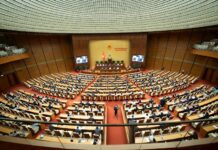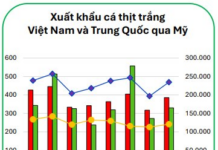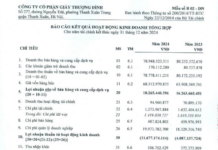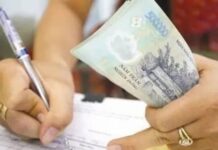Rooftop Solar Power: Unlocking Vietnam’s Energy Potential
The Ministry of Industry and Trade is drafting a decision for the Prime Minister on supporting households in installing rooftop solar power systems for self-production and self-consumption, including energy storage systems. A notable new approach is the proposed policy’s clear distinction between households with and without accompanying energy storage solutions.
Are the Support Levels Adequate?
According to the proposal, households installing rooftop solar power systems for self-consumption will receive support ranging from 1 to 1.5 million VND. Investing in an energy storage system (BESS) will result in an additional support of 1 to 1.5 million VND, bringing the maximum support per household to approximately 3 million VND.
Furthermore, residents will have access to subsidized commercial loan interest rates for investments, with a maximum loan period of 3 years. The loan amount will be calculated based on capacity: a minimum of 4 million VND/KWp for systems without energy storage, limited to 5 KWp. For systems with energy storage, the minimum loan amount is 2 million VND/KWh, applicable for a maximum capacity of 10 KWh.
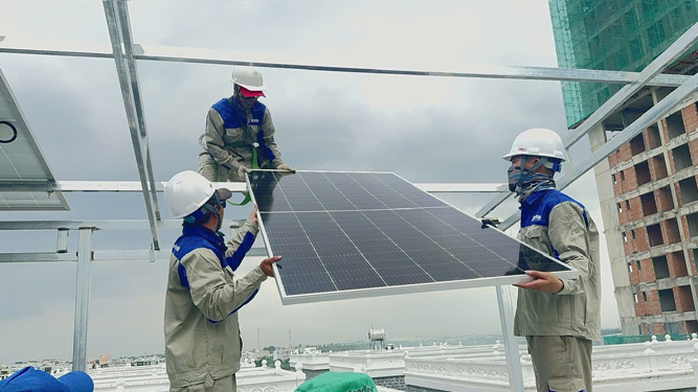
Technicians install a solar power system for residents in Ho Chi Minh City. Photo: LE TINH
Assuming 50% of households nationwide participate (equivalent to 14 million households), the total budget expenditure for support could reach 42 trillion VND in the 2026-2030 period, or about 8.4 trillion VND per year. This significant figure prompts the Ministry of Finance to reconsider the balance of central and local budgets. However, in return, if each household installs an average of 3 KWp, the total annual electricity production can reach more than 50 billion KWh, equivalent to 16% of the country’s electricity demand in 2024.
This not only reduces the operating and investment costs of the national power grid and minimizes purchases from high-cost sources but also contributes to emission reductions, enhances energy security, and saves costs for residents, especially those in the higher electricity tariff brackets.
However, the question arises as to whether the support level of 2 to 3 million VND is attractive enough to encourage households to invest in rooftop solar power. In reality, installation costs remain high. For example, Mr. Phan Ngoc Quan, a resident of Duong Noi ward in Hanoi, shared that utilizing 100 square meters of roof space for a solar power system without energy storage would cost approximately 240 million VND. Adding energy storage could bring the total investment to nearly 400 million VND. Such a substantial amount gives him pause, despite the potential support of 2 to 3 million VND.
Dr. Tran Mai Trang from the Institute of Vietnam and World Economics, along with her research team, cited a report indicating that the percentage of households in Hanoi participating in rooftop solar power installations by the end of 2024 is estimated to be only around 0.5%—significantly lower than in Ho Chi Minh City (1.8%) and Binh Duong (3.2%). The primary reasons are high initial costs, a lack of transparent information, and skepticism about actual efficiency.
In inner-city areas, small and shaded roofs present additional challenges for optimal exploitation. Dr. Trang characterized the period from 2020 to 2024 as a “time of suppressed potential” due to legal frameworks, financial mechanisms, and technical infrastructure not being synchronized, hindering households from implementing rooftop solar power solutions.
The Need for a Comprehensive Policy Package
Meanwhile, Mr. Nguyen Hoang Kien, Deputy General Director of Rang Dong Lightbulb and Tube Joint Stock Company, suggested that the payback period for rooftop solar power systems without energy storage is 2 to 2.5 years, and with energy storage, it extends to 3 to 4 years. Therefore, the project itself is already effective if residents can afford the initial investment. However, this initial capital remains a significant barrier. He proposed that the government should offer preferential loan policies with higher limits and interest rates of only 2-3%, instead of providing a one-time cash support of a few million VND.
Several localities and associations share the view that direct cash support may not yield long-term effectiveness. For instance, the Binh Duong Renewable Energy Association, in their comments submitted to the Ministry of Industry and Trade on July 23, suggested exempting households from VAT instead. They also encouraged the participation of commercial banks in the green credit mechanism to provide more flexibility in credit limits and interest rates. Additionally, the government should promptly issue national standards for residential solar power systems, encompassing solar panels to energy storage solutions, to boost user confidence.
From a management perspective, the Ministry of Science and Technology emphasized that with such substantial support from the budget, it is necessary to allocate resources with a focus on areas with high electricity demand, frequent power shortages, or strategic locations such as remote, mountainous, and island areas. This approach optimizes investment efficiency while enhancing energy security in vulnerable regions.
Dr. Tran Mai Trang further proposed the need for a more comprehensive policy package. She suggested that, in addition to financial support, there should be synchronization in technical aspects, planning, communication, and market control. For example, in Hanoi, the authorities should collaborate with financial organizations to develop green credit packages with preferential interest rates to facilitate households’ access to capital. Simultaneously, consider exempting or reducing VAT and import taxes on genuine equipment such as photovoltaic cells, inverters, and energy storage systems. Only by creating a complete ecosystem can rooftop solar power truly flourish.
Rooftop Solar Power Has Limitations; a Comprehensive Approach Is Needed
Inauguration of the 1,500 Billion VND Hai Anh Wind Power Plant
The Hai Anh Wind Power Plant project is a landmark initiative, proudly standing in the communes of Huong Phung and Lao Bao in Quang Tri Province. This ambitious undertaking represents a Group B energy project, ranked as a second-tier venture with an impressive 40 MW capacity. With a substantial investment of 1,500 billion VND, this onshore wind farm is a pioneering effort, being the first of its kind to partake in the Joint Crediting Mechanism (JCM) – a testament to the strong collaboration between the governments of Vietnam and Japan.
The Grand Parade: A Celebration of 80 Years of Independence
“In preparation for the grand ceremonial parade at Ba Dinh Square, two comprehensive rehearsals are meticulously planned to fine-tune the performance of the participating forces. Mark your calendars for the preliminary review on the evening of August 27 and the final dress rehearsal on the morning of August 30, as we march towards a spectacular display of unity and pride.”







